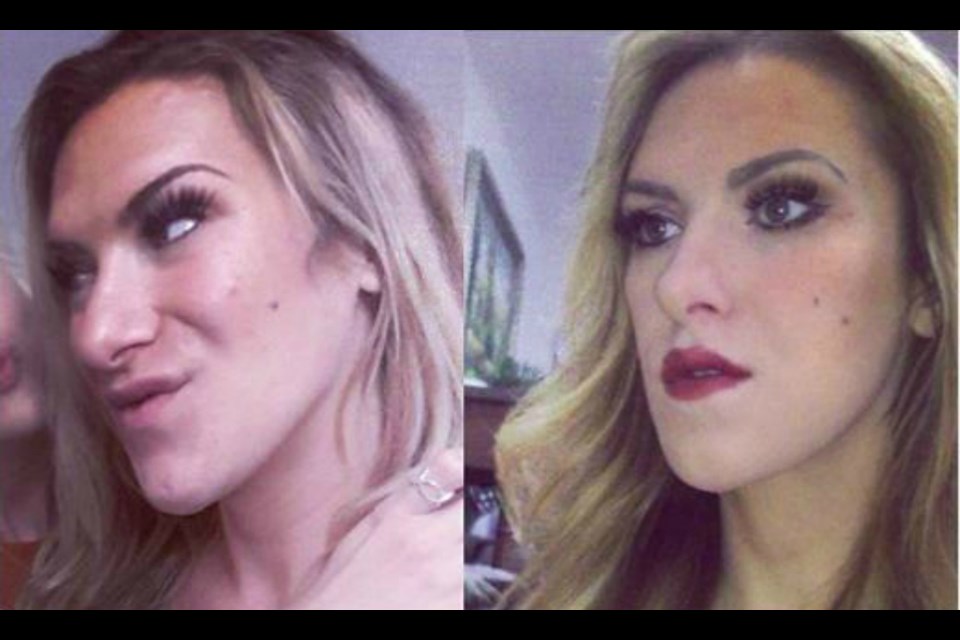SUDBURY - After years of struggle, a Sudbury woman has finally received successful treatment for a rare condition called acromegaly, which caused her hands, face and feet to keep growing.
Rebecca Churanova first noticed something was wrong as she entered high school. Acromegaly occurs when someone's pituitary gland (located behind the nose) produces too much growth hormone. In most cases, it is caused by a benign tumour, known as a pituitary adenoma.
Usually it affects middle-aged adults, but can occur at any age.
For Churanova, she figures the tumour affecting her pituitary gland emerged around Grade 8. An athlete, she broke school sprinting records, something she now attributes to the strength her overactive gland produced.
“It did have an effect then, and I'm surprised nobody noticed,” Churanova said. “When I was in Grade 8, I beat the 200-metre record by a full two seconds – and I beat all of the boys records.”
By Grade 10, she knew she wasn't feeling right, but it wasn't until she compared old photos to new ones that she noticed her face was changing – her chin and nose had become noticeably bigger.
“I did look quite different ... but at that time, I started to take birth control, which is a hormone that's added to your body,” she said. “So I think that kind of slowed the process a little bit.”
In addition to the physical changes, acromegaly also causes a host of other symptoms, including fatigue, headaches and vision problems. Doctors attributed it to range of conditions – anxiety, depression, vitamin deficiency, thyroid problems ...
“The list goes on and on,” Churanova said.
By her early 20s, the change in her looks was becoming obvious, and she was having trouble staying awake. She needed 10 hours of sleep a night, “plus three naps during the day.”
Acromegaly is extremely rare – it occurs in three or four people out of every million – and was far off the radar of the physicians she saw.
“A lot of the doctors would just kind of push me away, tell me it was stress or diet or that kind of thing,” Churanova said. “I was able to stay tough through it because, literally, I would probably still just be on antidepressants and anxiety medication right now and have never been diagnosed.”
She worked in Alberta for a while, but the fatigue and other symptoms led her back home, until she was finally connected with a specialist in Toronto via a video link who happened to be familiar with acromegaly.
“She knew right away, just by looking at my face, that that's what I had,” Churanova said.
As she tried to arrange treatment, her blurry vision got worse, and she began to occasionally lose her eyesight. After some frustration at Health Sciences North emergency department to find a doctor to take her condition seriously, a visiting endocrinologist came to see her.
“She got me into a CT scan right away, and it turned out that my tumour was bleeding, which could have killed me,” Churanova said.
She was referred to St. Michael's Hospital in Toronto, where, in August 2019, she had surgery through her nose to remove the tumour.
“They go underneath the base of your brain, instead of opening you up at the top of your head for brain surgery,” Churanova said. “The risk of complications is the stitching that's behind your nose could open and you could get what's called the CSF leak, which means your brain fluid literally leaks through your nose.”
She has since made a full recovery, and parts of her body have started shrinking closer to normal.
“That's also really rare,” Churanova said. “I'm actually the one of the first people to actually document the post-effects of having the surgery.”
Had acromegaly struck her before she went through puberty, she likely would have had gigantism, where people go through extreme growth spurts. That was the condition affecting the late wrestler André the Giant.
Two months after her surgery, the Mirror, a newspaper in Great Britain, picked up on her story. While eager to spread awareness about acromegaly, Churanova wasn't thrilled about the headline: 'Woman horrified to discover what was making her face 'uglier and uglier.'
Newspapers across Europe ran a version of the story, and last week, she was featured in a segment on the American TV show, The Doctors. The show picked up on the Mirror's take on the story, calling the segment, 'Woman’s Search for Answers about Why She Was Getting Uglier.'
Churanova says it wouldn't be her way of describing it, but that element is what brought the attention to acromegaly.
“That's how I went viral, and so that was what they ended up calling it,” she said. “I didn't have any idea. That was a little bit frustrating … but I don't care. It's raising awareness, you know, and that is how I felt. What was going on with my face?”
Looking back, Churanova has since realized her grandmother suffered from the same disease, although it hit her when she was an adult and the effects were less pronounced. She was never properly diagnosed.
“She had an enlarged heart, she went blind in one eye, she had really bad arthritis and diabetes,” she said. “She had the maximum of all symptoms, but even then it wasn't caught.”
Acromegaly is hereditary, and Churanova said she has decided not to have kids “just to stop the whole cycle.” She has a mutation that causes tumours to grow on her glands. So Churanova has to go for regular screenings to ensure she is still healthy.
“It's something that I'll always have with me,” she said. “But at least now, I know how to deal with it. I know exactly what to look for, which blood tests I need.”
And she's committed to spreading awareness in hopes that others will get a faster diagnosis, and not have to spend years searching for answers.
- Sudbury.com
